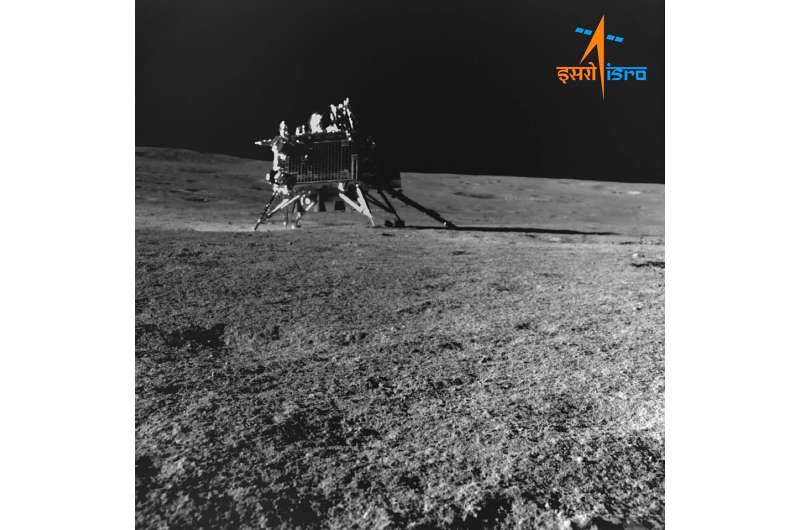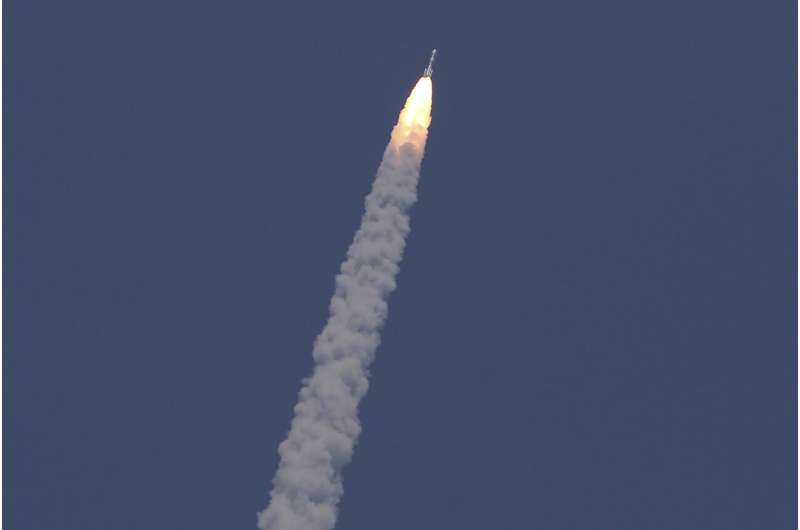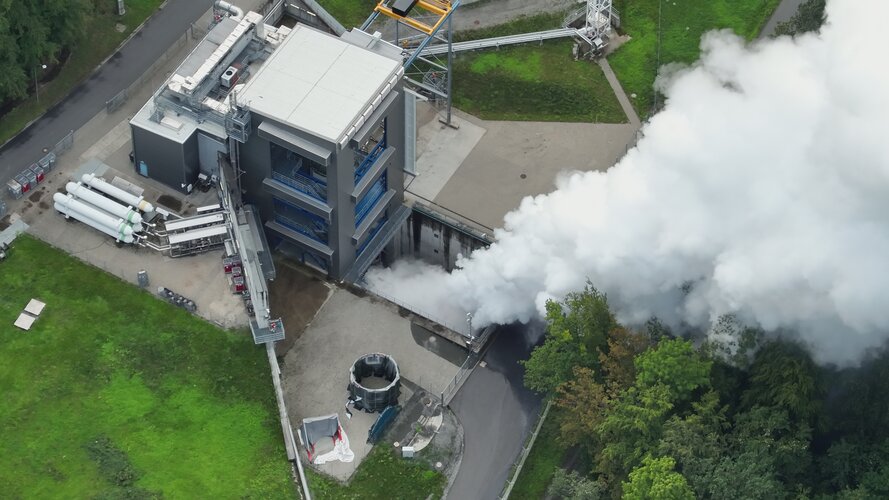How does "MAD" accretion form around a black hole?
Sunday, 03 September 2023 10:50 An international scientific team has revealed for the first time the magnetic field transport processes in the accretion flow of a black hole and the formation of a "MAD"-a magnetically arrested disk-in the vicinity of a black hole. The researchers made the discovery while conducting multi-wavelength observational studies of an outburst event of the black hole X-ray binary MAXI J1820+070, using
An international scientific team has revealed for the first time the magnetic field transport processes in the accretion flow of a black hole and the formation of a "MAD"-a magnetically arrested disk-in the vicinity of a black hole. The researchers made the discovery while conducting multi-wavelength observational studies of an outburst event of the black hole X-ray binary MAXI J1820+070, using Scientists detect and validate the longest-period exoplanet found with TESS
Sunday, 03 September 2023 10:50 Scientists from The University of New Mexico (UNM), and Massachusetts Institute of Technology (MIT) have detected and validated two of the longest-period exoplanets found by TESS to date. These long period large exoplanets orbit a K dwarf star and belong to a class of planets known as warm Jupiters, which have orbital periods of 10-200 days and are at least six times Earth's radius. This recent
Scientists from The University of New Mexico (UNM), and Massachusetts Institute of Technology (MIT) have detected and validated two of the longest-period exoplanets found by TESS to date. These long period large exoplanets orbit a K dwarf star and belong to a class of planets known as warm Jupiters, which have orbital periods of 10-200 days and are at least six times Earth's radius. This recent New giant planet evidence of possible planetary collisions
Sunday, 03 September 2023 10:50 A Neptune-sized planet denser than steel has been discovered by an international team of astronomers, who believe its composition could be the result of a giant planetary clash.
TOI-1853b's mass is almost twice that of any other similar-sized planet known and its density is incredibly high, meaning that it is made up of a larger fraction of rock than would typically be expected at that sca
A Neptune-sized planet denser than steel has been discovered by an international team of astronomers, who believe its composition could be the result of a giant planetary clash.
TOI-1853b's mass is almost twice that of any other similar-sized planet known and its density is incredibly high, meaning that it is made up of a larger fraction of rock than would typically be expected at that sca Hot Jupiter blows its top
Sunday, 03 September 2023 10:50 A planet about 950 light years from Earth could be the Looney Tunes' Yosemite Sam equivalent of planets, blowing its atmospheric 'top' in spectacular fashion.
The planet called HAT-P-32b is losing so much of its atmospheric helium that the trailing gas tails are among the largest structures yet known of an exoplanet, a planet outside our solar system, according to observations by astronome
A planet about 950 light years from Earth could be the Looney Tunes' Yosemite Sam equivalent of planets, blowing its atmospheric 'top' in spectacular fashion.
The planet called HAT-P-32b is losing so much of its atmospheric helium that the trailing gas tails are among the largest structures yet known of an exoplanet, a planet outside our solar system, according to observations by astronome How is ESA supporting ISRO's Aditya-L1 solar mission
Sunday, 03 September 2023 10:50 The Indian Space Research Organisation (ISRO) has launched its Aditya-L1 solar observatory from Satish Dhawan Space Centre in Sriharikota Range (SDSC SHAR), India, at 11:50 IST (08:20 CEST) on 2 September 2023.
It's an ambitious mission that will generate vast quantities of science data as the spacecraft balances in an unstable orbit. With its global network of deep space ground stations a
The Indian Space Research Organisation (ISRO) has launched its Aditya-L1 solar observatory from Satish Dhawan Space Centre in Sriharikota Range (SDSC SHAR), India, at 11:50 IST (08:20 CEST) on 2 September 2023.
It's an ambitious mission that will generate vast quantities of science data as the spacecraft balances in an unstable orbit. With its global network of deep space ground stations a Unprecedented gamma-ray burst explained by long-lived jet
Sunday, 03 September 2023 10:50 Last year, Northwestern University researchers reported new observational evidence that long gamma-ray bursts (GRBs) can result from the merger of a neutron star with another compact object (either another neutron star or black hole) - a finding that was previously believed to be impossible.
Now, another Northwestern team offers a potential explanation for what generated the unprecedented
Last year, Northwestern University researchers reported new observational evidence that long gamma-ray bursts (GRBs) can result from the merger of a neutron star with another compact object (either another neutron star or black hole) - a finding that was previously believed to be impossible.
Now, another Northwestern team offers a potential explanation for what generated the unprecedented India's moon rover completes its walk, scientists analyzing data looking for signs of frozen water.
Sunday, 03 September 2023 08:16
India's moon rover completes its walk. Scientists analyzing data looking for signs of frozen water
Sunday, 03 September 2023 08:16
SpaceX launches 13 satellites for U.S. Space Development Agency
Saturday, 02 September 2023 13:54
India launches spacecraft to study the sun after successful landing near the moon's south pole
Saturday, 02 September 2023 07:52
India launched its first space mission to study the sun on Saturday, less than two weeks after a successful uncrewed landing near the south polar region of the moon.
From the Moon to the Sun: India launches next space mission
Saturday, 02 September 2023 06:09 The latest mission in India's ambitious space programme blasted off Saturday on a voyage towards the centre of the solar system, a week after the country's successful unmanned Moon landing.
Aditya-L1 launched shortly before midday, with a live broadcast showing hundreds of spectators cheering wildly against the deafening noise of the rocket's ascent.
"Launch successful, all normal," an
The latest mission in India's ambitious space programme blasted off Saturday on a voyage towards the centre of the solar system, a week after the country's successful unmanned Moon landing.
Aditya-L1 launched shortly before midday, with a live broadcast showing hundreds of spectators cheering wildly against the deafening noise of the rocket's ascent.
"Launch successful, all normal," an NASA spots new Moon crater, likely caused by crashed Russian probe
Saturday, 02 September 2023 06:09 NASA has spotted a small new crater on the Moon that was likely caused by a Russian probe crash landing on the surface around two weeks ago.
The finding was made by the Lunar Reconnaissance Orbiter (LRO) by comparing before and after images of the estimated impact point, provided by Russian space agency Roscosmos.
The Luna-25 probe crashed on August 19, scuppering Russia's hopes of reviv
NASA has spotted a small new crater on the Moon that was likely caused by a Russian probe crash landing on the surface around two weeks ago.
The finding was made by the Lunar Reconnaissance Orbiter (LRO) by comparing before and after images of the estimated impact point, provided by Russian space agency Roscosmos.
The Luna-25 probe crashed on August 19, scuppering Russia's hopes of reviv Stormy Atlantic off Florida delays return of astronauts from space station
Saturday, 02 September 2023 06:09 The scheduled departure of Crew 6 astronauts from the International Space Station on Saturday has been delayed because of severe weather off the coast of Florida.
NASA says the Crew Dragon spacecraft, named Endeavour, is in good condition and remains docked at the space station.
With a splashdown off the coast of Florida, Endeavour will bring back to earth the multinational Crew
The scheduled departure of Crew 6 astronauts from the International Space Station on Saturday has been delayed because of severe weather off the coast of Florida.
NASA says the Crew Dragon spacecraft, named Endeavour, is in good condition and remains docked at the space station.
With a splashdown off the coast of Florida, Endeavour will bring back to earth the multinational Crew Trial by fire for Ariane 6’s upper stage
Friday, 01 September 2023 18:56
Validation testing continues for ESA’s all-new Ariane 6 launch vehicle, with firing of its two upper stage engines to simulate the way they will have to operate together during a flight.
Pentagon unveils new website for reporting (and learning about) UFOs
Friday, 01 September 2023 17:09
The Pentagon has opened up a new portal for professionals to submit reports about UFOs—now officially known as unidentified anomalous phenomena, or UAPs—and for the rest of us to find out about the reports that have been released.
AARO.mil, the website for the All-domain Anomaly Resolution Office, is still a work in progress. For example, a promised online form for contacting the AARO is labeled as "Coming Soon." But the version unveiled today offers eight videos showing UAPs, plus archives for congressional reports and briefings, press releases and links to other resources.
"The website will serve as a one-stop shop for all publicly available information related to AARO and UAP," Air Force Brig. Gen. Pat Ryder, the Department of Defense's press secretary, said today during a briefing.

